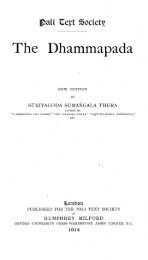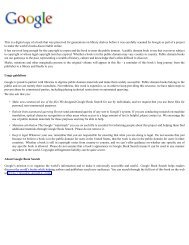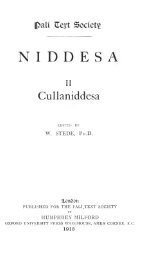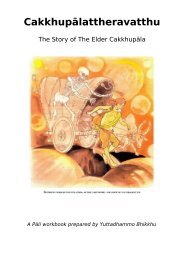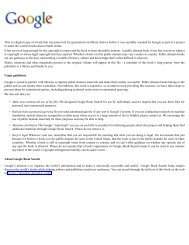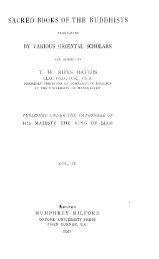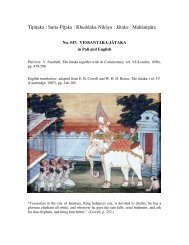Lessons In Practical Buddhism - Sirimangalo.Org
Lessons In Practical Buddhism - Sirimangalo.Org
Lessons In Practical Buddhism - Sirimangalo.Org
You also want an ePaper? Increase the reach of your titles
YUMPU automatically turns print PDFs into web optimized ePapers that Google loves.
“satiñca khvāhaṃ, bhikkhave, sabbatthikaṃ vadāmi” –<br />
“mindfulness is always useful.” Not understanding this<br />
distinction can be a problem for people with a knowledge of<br />
the classification of character types discussed in Buddhist<br />
texts; they may say that mindfulness meditation just isn’t<br />
suitable for their character type. According to the Buddhist<br />
texts, however, the practice of mindfulness is outside of such<br />
a classification, since it deals with ultimate realities; it is not<br />
meant to adjust one’s particular addictions or aversions, nor<br />
is it a creation-based meditation where one focuses on a<br />
concept or entity. <strong>In</strong> mindfulness meditation, one focuses on<br />
what is truly real.<br />
Even from a superficial study of the Buddha’s teaching, it’s<br />
clear that this is the sort of practice the Buddha had in mind<br />
even when not referring to meditation practice directly.<br />
What he taught most often by far was one form or another of<br />
the objects of mindfulness – what we call the four<br />
foundations or establishments of mindfulness. <strong>In</strong> some<br />
teachings he referred to them as the five aggregates; in<br />
others, the six senses; sometimes he referring to them<br />
simply as “body and mind”. <strong>In</strong> all such cases, the emphasis<br />
is clearly on being mindful of what is verifiable real in terms<br />
of phenomenological experience. The more one studies the<br />
Buddha’s teaching and commentarial texts, the more one<br />
comes to see that mindfulness of reality is by far the most<br />
commonly taught and widely applied form of meditation<br />
found in early <strong>Buddhism</strong>. For this reason, mindfulness is the<br />
most reliable method of practice a meditation teacher can<br />
prescribe in order to lead the majority of their students to<br />
the core of the Buddha’s teaching; whereas one need be<br />
careful prescribing other more subjective meditation<br />
practices and aware of the potential harm that can come<br />
from prescribing the wrong method for certain meditators,<br />
prescribing objective mindfulness of experiential reality<br />
presents no such danger. It has objective benefits for pretty<br />
much everyone who undertakes it and, if practised correctly,<br />
has the potential to lead all being out of their individual<br />
addictions and aversions without exception.<br />
Once we accept the benefits of mindfulness as a meditation<br />
practice, we still need to answer the question “what exactly<br />
do we mean by mindfulness?” An answer is made difficult by<br />
66



